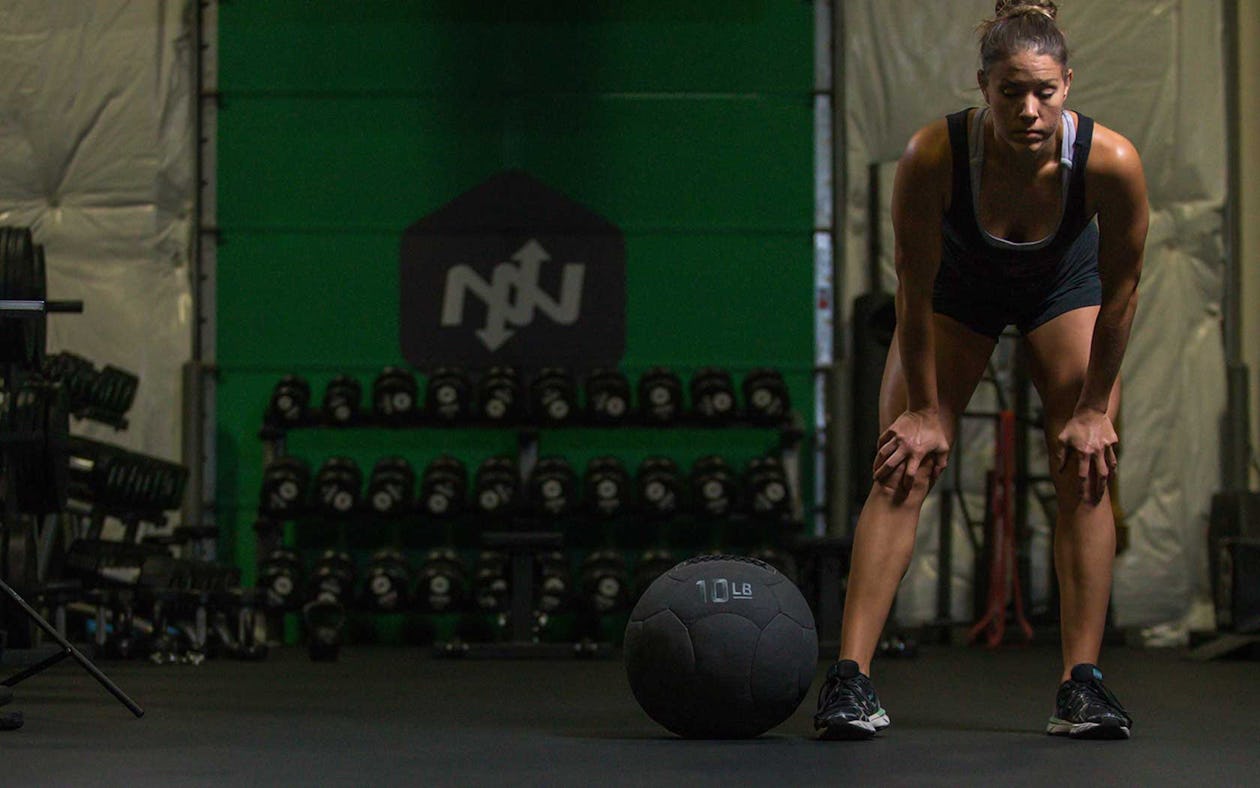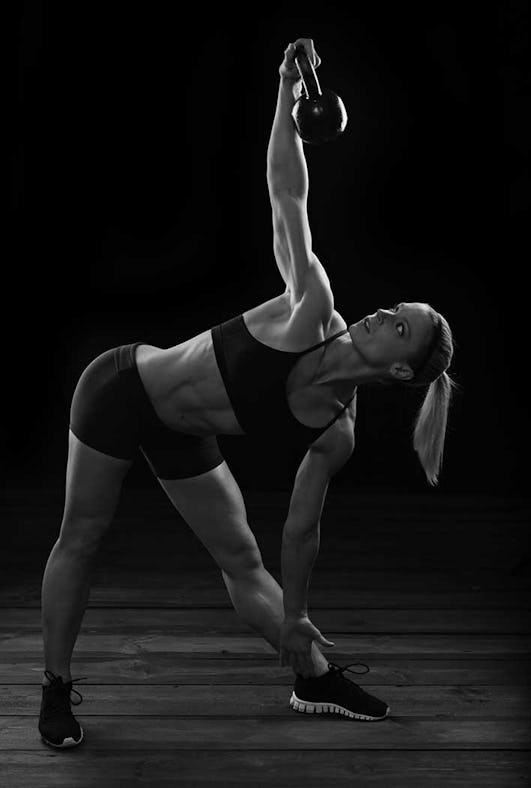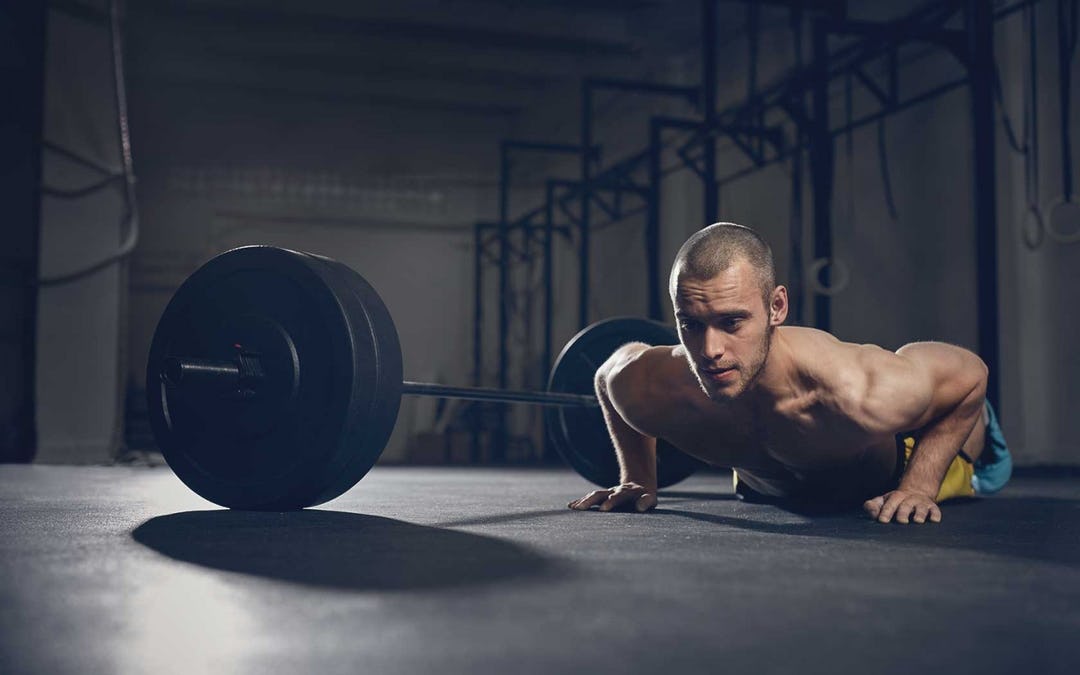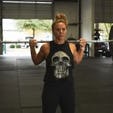Trying to get stronger is a long-term process that requires years of consistent, dedicated training… well, most of the time.
For the less patient among us, there are a few tricks you can pull in the gym—today, for instance—that will have you putting up big numbers right away.
Here are five ways you can get stronger immediately.
Get Stronger Tip #1: Take Off Your Shoes
Losing your shoes before you deadlift is the simplest way to increase your mechanical advantage on the lift and use more weight.
It decreases the distance you have to lift the bar, and while an inch or so may not seem like much, it can make the difference between a big PR and an epic fail.
If your gym is too soft to let you lift in just your socks or bare feet, do the next best thing and lift in minimalist shoes or sneakers with a thin, flat sole—nothing squishy that would make you unstable.
If you don’t mind getting strange looks, Vibram Five Fingers (those weird toe shoes) would be ideal.
Wrestling shoes would also work, or a Converse Chuck Taylor.
Get Stronger Tip #2: Throw a Medicine Ball

The kind of explosive movements you can do with a medicine ball fire up your central nervous system, prepping it to recruit more muscle fibers when you perform subsequent exercises.
Try the medicine ball chest pass with a forward jump, says Jason Ferruggia, a strength coach, and host of The Renegade Radio Podcast on iTunes. Hold an 8–12-pound ball at chest level and throw it forward as you jump forward. Do 3–5 sets of 1–3 reps. “You could do it before your work sets or alternate it with sets of a heavy lift,” says Ferruggia.
For example, do a set of ball throws, rest 30–90 seconds, then do a heavy pressing exercise for 5–6 reps, rest again and repeat. “You could alternate the two while you work up to the heaviest weight you’re going to use, or do sets across [multiple work sets with the same load].”
Get Stronger Tip #3: Lift MORE Than Your Max

Want to increase your max on a lift? Try going even heavier than you possibly can. Seriously, lifting weights that are greater than your one-rep max will trick your body into increasing it.
Here’s how it works. Load a barbell with 125% of what you think you can currently do for one solid rep (estimate conservatively for the sake of safety). Then unrack it and simply hold it at lockout for five to 10 seconds. Have a spotter handy in case you get in trouble.
This technique works particularly well for squat and bench press variations. For example, for squatting, get under the bar and walk it out of the rack and stand there for a few seconds. Don’t squat. Then walk it back in.
Now that your nervous system is primed, strip the bar to a load that’s challenging but something you can realistically lift. “You will notice that you can increase the number of reps performed with a given weight,” says Ryan Munsey, owner of House of Strength Gym in Roanoke, VA (houseofstrengthgym.com), “or you can increase the load that you can lift for one to three reps.”
This is how a session might go if your current max bench press is 225 pounds: Load the bar with 280 and have at least one spotter help you unrack it. Hold it with elbows just shy of lockout (almost entirely straight) for five seconds. Re-rack the bar.
Now strip the weight down to 225 and attempt as many reps as possible. Chances are you’ll get at least two—a new PR. Alternatively, you can try to lift 230 for one rep.
“The science behind the effectiveness of these holds is hotly debated in the strength community,” says Munsey. “Explanations range from inhibition of the golgi tendon organs”—which act as an overprotective mother, preventing your muscles from contracting as hard as they can in the interest of staying safe—“to potentiation of the nervous system. Either way, the in-the-trenches results are in, and this method works.”
Get Stronger Tip #4: Get Tight

The most sure-fire way to improve strength on any lift is to improve the way you perform it, i.e. your technique. One way to do that is to practice your ability to create tension throughout your body, so there are no energy leaks when you begin transferring that strength into the bar.
Sam Pogue, Director of Communications and a Senior Coach for the Onnit Academy offers up this activation drill for your hips that you can do before you deadlift.
A. Stand with your feet hip-width apart and actively drive them outward—but without actually moving them. Imagine spreading a rug out beneath you with the edges of your feet. This will get your hips firing.
B. Keeping your chest up (think: “proud chest”), bend your hips backward as if trying to touch your butt to a wall behind you so your torso moves toward the floor. Keep your knees soft and go as far as you can so you feel tension loaded into your hamstrings.
C. Now draw your shoulder blades down, as if stuffing them into your back pockets, and squeeze your lats as hard as possible. This replicates the beginning position of the deadlift. Hold the position for 20 seconds.
Repeat the entire drill for three total sets.
“Seeing as how the deadlift is initiated through the concentric phase of the lift [the upward portion of the rep], unlike the squat, which starts with the eccentric [lowering portion],” says Pogue, “your ability to go heavy stems from the amount of tension you can create at the bottom.” In other words, practicing getting into a tight position with all your muscles firing will prepare you to be strong when you need it most—just before you try to break the bar off the floor on the deadlift.
Get Stronger Tip #5: Learn to Breathe and Brace

Your breathing sucks. Almost everyone’s does, because most people breathe into their chests, causing their shoulders to rise. As a result, they never get the full use of their lungs, which draw in more air when you use your diaphragm, expanding your belly while your shoulders stay still.
“You could brace better and lift more weight more times if you used breathing to support the movement,” says Belisa Vranich, Psy.D., founder of The Breathing Class. (Before you click away thinking that breathing classes are hippy-dippy nonsense, consider that Vranich works with UFC fighters and law enforcement personnel.)
This is how you should be breathing: Fill your belly with air on every breath, expanding your abdomen 360 degrees. On the exhale, draw your ribs down and pull in your stomach. Doing so will not only better oxygenate your blood, giving you the energy to train harder and more efficiently, it will also have a mechanical effect on your ability to move the weight. Inhaling into your belly helps stabilize your torso, and that means better abdominal bracing for heavier squats, benches, and deadlifts.
Your pelvic floor helps too. These are the muscles that cut off your pee stream. Before any big lift, inhale deeply and clamp these muscles down as if you were shutting off your urine. Then brace your abs as if taking a punch. Now lift. Keep the pressure through the sticking point. Then exhale with force.
“Your exhale muscles are the first to get tired,” says Vranich. “Your getting winded isn’t what it seems. You think you can’t get enough air in, but your exhale muscles are probably underdeveloped, so your exhale is less efficient. That makes your inhale suffer as well.” The less air you push out on each exhale, the less you can draw in on the following inhale. Practice belly breathing for 15 minutes daily until it becomes natural, and you’ll never run out of air in a workout again.

)






